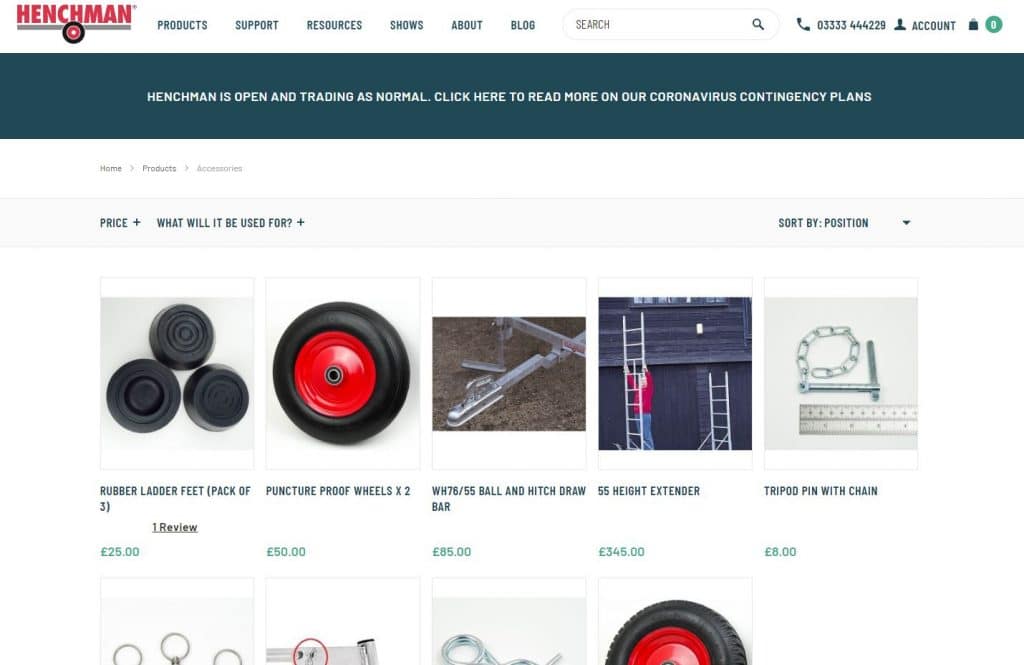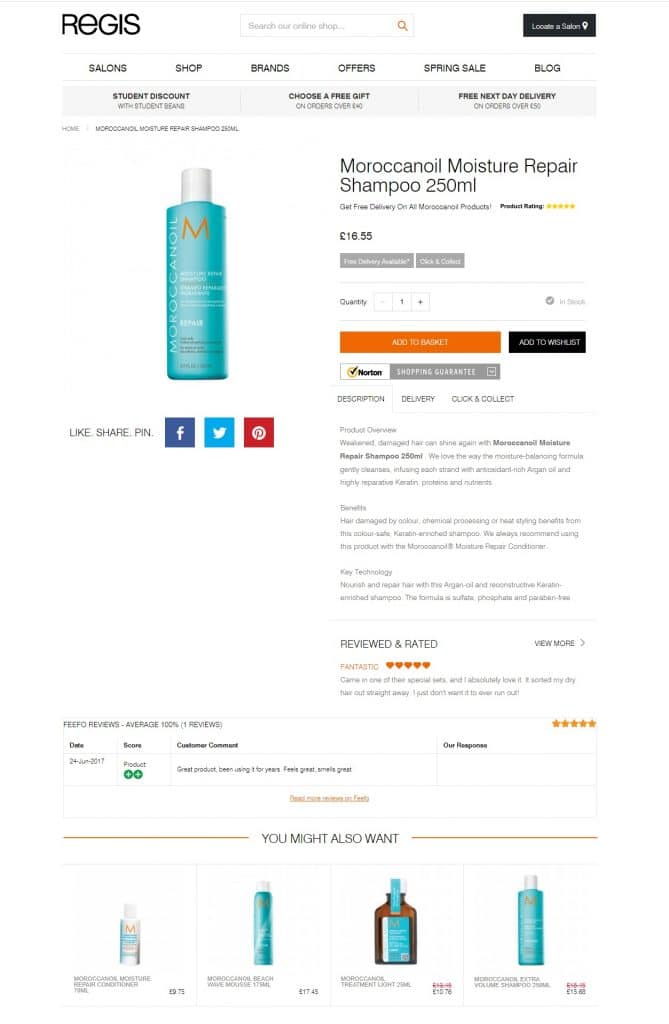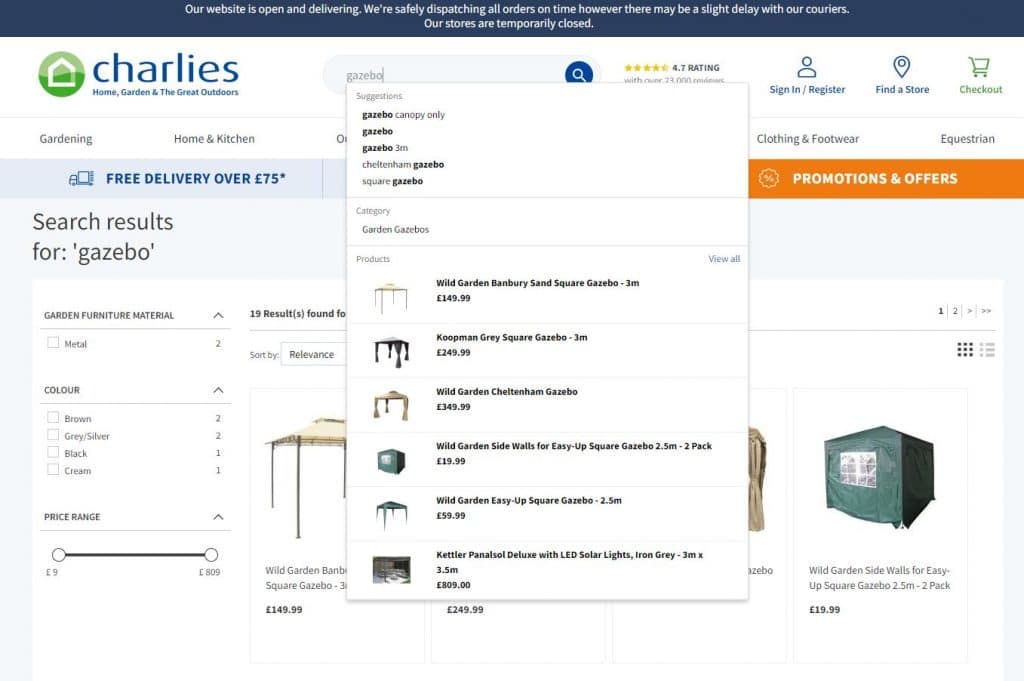Coronavirus is on our minds and on our screens. There is no doubt about it, the pandemic has had an unprecedented impact on all of us. It has forced us to adjust even the smallest of habits, from the way we communicate to the way we shop and work. With the announcement of nationwide lockdown earlier this week, more people than ever before have been forced online to purchase essentials, and at times, just to gain a sense of community and escapism.
What‘s the impact been so far?
It was found that a quarter of people are now shopping online more frequently in light of the virus, while 40 percent have increased how often they read the news and 25 percent are checking social media even more than before.
In some cases, this shift online has seen eCommerce traffic go through the roof as realisation settles in that we can’t just pop to the shops anymore. Some industries are enjoying a surge in traffic and conversions, however, keeping up with this demand presents a whole other challenge. Many businesses are now feeling the pressure as high-demand, low supplies, limited delivery options and store closures are putting a strain on their business management. Even Amazon, the largest eCommerce site in the world, wasn’t prepared for COVID-19 with Amazon Prime deliveries now taking up to a month. Their buy anything at any time business model has switched to prioritising the most in demand, essential items to meet changing consumer demand.
Nielsen have analysed the pandemic impact on consumer buying habits over the last six weeks vs the same period last year. Frozen food, health products, beauty and toiletries, baby products, household supplies, pet supplies, and groceries have all seen a spike. And this trend is only set to continue. In fact, UK courier, ParcelHero, expects eCommerce purchases to double to 40 percent of all retail sales at its peak. Many clothing retailers with an omnichannel presence including All Saints, Whistles and Reiss have already started launching early sale promotions to attract consumers.
With brands already putting tactics in place, we’ve taken a look at eCommerce results from a variety of industries and it’s fair to say, the results differ:
- Health and wellbeing: Traffic and conversions have risen as users stock up on soaps and cleaning supplies. More people are also using wellbeing resources to learn how they can stay healthy during this time.
- Home: At the moment, this industry seems to have taken a hit with less people wanting to spend on larger items. However, this may see changes as we adapt to spending more time at home.
- Fashion: Luxury fashion has seen an increase in conversions while everyday clothing has currently decreased. Again, this could be the impact of working from home but may see changes as the situation continues.
- Food and drink: Expectedly, food and drink has seen massive increase. Online retailers selling these items are experiencing increased demand as many head online to buy their groceries.
As offline shoppers are forced online, one thing is for certain that these industry results may change. However, this shift has presented a huge opportunity for businesses to attract new customers. Even if they’re not ready to purchase from you right away, building new connections and strengthening existing ones should be the focus right now. By delivering positive experiences in a time of need, you are likely to win new customers who may keep returning, even after everything has settled.
How your website can support you
Your website and social media channels have just become your best channels for success. With few other places to turn, most people will be found online. Whether that’s browsing their favourite brand’s website, scrolling through social media, watching TV or streaming podcasts.
Staying connected with your audience, providing them with clarity and an enjoyable online experience with your brand is crucial during this uncertain time. Many retailers will have just temporarily lost their physical presence, making their eCommerce store the most important asset to maintain their business. Now is the time to simplify and streamline the buying process on your website for your audience, making their experience with you as positive as possible. This includes:
- Thinking mobile-first: You should always think audience-first – crisis or not. However, as more people are indoors with limited resource to entertain them, mobile usage is likely to spike. If you’re making any changes to or browsing your website, view it from the point of view of your users and always consider what they would expect.
- Increasing site search use: Your site search box needs to stand out. For those ‘ready to buy’ customers, which, depending on your market, you may have more or less of right now, it’s the feature they will look for as soon as they visit your site. For people to find the product or service they want, they need to be able to search through your website content quickly and easily. Individuals who use the site search feature generally have a higher than average conversion rate. In fact, site searches have an average conversion rate of 2.4% in comparison to the generic site average of 1.7%.
- Using smart search: It’s not just the prominence of your search box that is important, search filters are too. Partnering with Klevu, a world-class search technology delivering intuitive and responsive user experiences, we can help connect your shoppers with the products they are looking for in their time of need.
- Filtering effectively: Ensuring your filtering system is robust will help users find the products they want faster. Once your filters have been carefully selected and placed into a logical pattern, their use can be monitored in Google Analytics, ensuring frequently used ones are closer to the top.
- Effectively merchandising your store: Web merchandising helps to get your website in the best condition possible. This ensures you’re getting the most from the traffic you’re still receiving or the burst of extra traffic you may currently be experiencing.
- Reviewing return policies: For the foreseeable, we’re going to be unable to leave our homes for non-essential reasons. Reviewing and extending your return policies in light of this is the right thing to do. Acting responsibly and compassionately during this time is paramount to show your customers you’re there for them. It’s also important to be transparent regarding delivery times to ensure your customers are kept informed due to the circumstances that may be causing delays.
- Using a lock-in checkout: Work on reducing your cart abandonment rate to secure more orders. For this, we suggest having a lock-in checkout which includes a simplified header to help reduce distraction and minimise the chance of users leaving at this last stage. This is also an effective place to reinforce your return and delivery policies.
The importance of web merchandising
From the moment a person walks through their door, retail stores have been expertly visually merchandised to engage. Think elaborate window displays, skilful mannequin arrangements and enticing product layouts. With these physical experiences lost overnight, businesses must rely on translating their brand experience online. An eCommerce store doesn’t limit your ability to do this. Instead, you have a whole new set of tools and tactics to attract and engage users.
While most visitors to a bricks-and-mortar store will interact with the same visuals, aromas and features within that space, there are numerous paths a customer can take within your eCommerce site. The most important function of web merchandising is to guide your customer’s buying journey. Even if consumers aren’t ready to purchase your products right away, ensuring your website experience is a positive one today means they may return to convert when they feel more comfortable to do so.
Merchandising allows you take the reins. Using these tactics, you can not only drive brand awareness and engagement but also influence how visitors shop to increase customer loyalty. Your audience is still out there, but their priorities will have likely changed. We now want to know how to protect ourselves, our health, our jobs and our loved ones. Take the time to review your online offering and consider what may need changing to reflect this.
How to get your website in shape with web merchandising
Whether its consumers browsing or a sudden increase in conversion, ensuring your website is catering for your audience the best it can, will help you maintain interest from users through these challenging times. To providing a helping hand, we’ve collated our top tips for web merchandising to help you get your website in tip-top condition for the weeks ahead.
Know your best and worst sellers
Have these changed over the past few weeks? Knowing your best and worst sellers means you can take this into consideration when choosing product placement. Bestsellers could be placed at the top of relevant category pages to enhance visibility when a user clicks onto your site. Worst sellers could be bundled into a separate category page for your special offer items and used as a landing page for a paid ad.

Take ladder specialist, Henchman, as an example. One of their bestselling products is a three-pack of rubber ladder feet. However, this was hidden on the fourth page of their Accessories category. By changing this positioning to first place within the category, it received 18 times more page views and increased sales by nearly 500 percent year on year.
Publish your products in more than one category (when relevant)
Even if people aren’t purchasing nice-to-haves as frequently, optimising the visibility of your products by placing them into as many relevant categories as possible shows your users exactly what you can offer them. For example, a new-born baby grow could fit under children’s wear, but it could also sit comfortably into 0-3 months or the baby grow category. You can increase the chances of a user finding a relevant product while browsing your website by doing this.
Provide in-depth product information
Unlike bricks-and-mortar stores where all five of our senses are stimulated, online shopping takes away the opportunity to touch and physically see the product. Providing as much in-depth information on product pages has now become a vital substitution for eCommerce retailers. It’s also worth highlighting key features in bullet points towards the top of the description to allow for quick reading.
Alongside detailed and engaging copy explaining what colours, sizing, material and relevant instructions, you should also aim to include up to ten images. We recommend using a mixture of product and lifestyle along with video footage taken with a high-quality camera. Our client, Osprey Europe, have multiple images of each product at different angles including a 360 video, key features information and uses.

Put upsell and cross sell functionality to good use
Using upsell and cross-sell functionality is key to increasing your average order value and continuing a user’s journey in a seamless way. A simple way of boosting conversion rate is to encourage your existing customers to spend more on each order. By using cross-selling and upselling functionalities, you can help maximise revenue while the shopper is present on your site. Regis do this well by cross-selling their Moroccan Oil range at the bottom of each product page.

For example, if a customer has added a watering can to their basket, why not encourage them to look at a planter starter kit to go with it? Customers will often look for smaller purchases that will bump their shopping basket up to go over the free delivery threshold. Nosto is our third-party partner of choice to implement these tactics. Delivering a tailored eCommerce experience through product personalisation, we can implement pop-ups and customised messaging based on what the user has already shown interest in.
Help users narrow down their search
Now is the time to be as helpful as possible for your audience. If you have an extensive product offering, it’s important to help users narrow down their search to create a faster shopping experience. Particularly if you have a large number of products within one category, users can easily tire of searching through to find the item they’re after. Adding filters and layered navigation, products can be segmented by material, colour, age etc. dependant on the product type. The intuitive search technology provided by Klevu, allows merchants such as Charlies to create a fast and responsive user experience.

Give categories clear names
When you’re working with the same products and services every day, it’s easy to slip into what you’re used to calling them. For example, the buying team may call them ‘dressmaking models’ but that doesn’t mean you should give the category this name. In this instance, ‘mannequins’ may be a better fit. Consider all the different words that can be used to describe the product using tools such as Google Trends to see which words and phrases are used the most. This ensures your categories are relevant and also capitalises on the increased search intent around these products.
Don’t be scared of bad product reviews
Communication is key and now is the most important time of all to show your customers you’re there. The value you can gain from what a customer writes about your product is second to none! Use your reviews, whether good or bad, to your advantage. If feedback comments on missing information or photography, why not update this in your product listing? We also recommend replying to bad reviews to build on your customer to brand relationship. Not only will this show that you care but if you can actively make changes based on feedback, customers will feel valued.
We recommend a solution such as Yotpo, an eCommerce marketing platform, that helps brands drive growth by building long-lasting customer relationships. Using Yotpo, you can leverage social proof in the form of reviews, referrals and loyalty programmes to make decisions based on what your customers actually want.
Maybe competition has just increased two-fold in the world of eCommerce and getting yourself noticed is harder than before. Either way, your eCommerce website has just become your number one asset. It’s important to consider how you can make your online store even better, creating a stress-free website experience for your audience to browse at their leisure.
Visual merchandising is a key player in making this happen. By marketing your products and services in an engaging and natural way, you can drive more traffic and build your brand connection while creating loyal, repeat customers in the process. If you have an online business wading through the now unfamiliar waters of eCommerce, get in touch. We want to help. Team Pinpoint are here, fully operational and on hand to provide support and advice on how you can better leverage your website in these unprecedented times.

